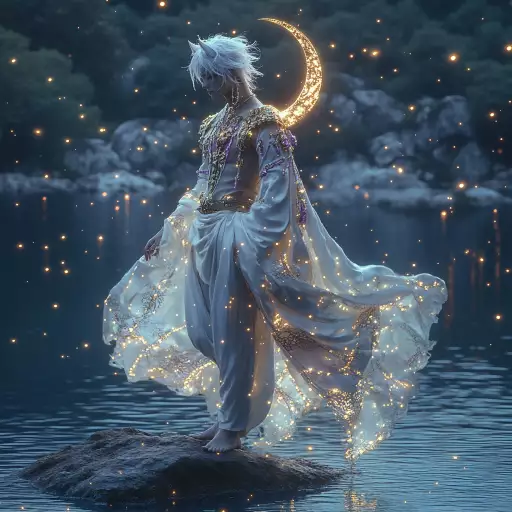Explore the Best AI Image Gallery

Pixelated Portraits: AI Image Generation and the Future of Marketing
The world of marketing is constantly evolving, with new technologies emerging to reshape how brands connect with their audiences. One of the most exciting and disruptive advancements in recent years is AI image generation. This technology allows computers to create realistic and imaginative images from text prompts, opening up a vast array of possibilities for marketers.
The Creative Canvas: A New Frontier for Marketing
AI image generation tools, such as DALL-E 2, Midjourney, and Stable Diffusion, are empowering marketers to create compelling visuals that were previously time-consuming and expensive to produce. Imagine generating a unique image to accompany every social media post, crafting personalized product mockups for individual customers, or designing eye-catching visuals for marketing campaigns with just a few words.
Potential Uses in Marketing
- Social Media Content: Generate captivating images for posts, stories, and ads that stand out from the crowd.
- Product Visualization: Create realistic renders of products in different settings or configurations to enhance e-commerce experiences.
- Personalized Marketing: Design custom visuals tailored to individual customer preferences or demographics.
- Marketing Collateral: Generate unique images for brochures, flyers, presentations, and other marketing materials.
- Advertising Campaigns: Craft striking visuals that capture attention and convey brand messages effectively.
Navigating the Ethical Landscape
While AI image generation offers immense potential, it also raises ethical considerations that marketers must carefully address:
- Copyright and Ownership: Who owns the copyright to AI-generated images? How do we ensure fair attribution and prevent plagiarism?
- Bias and Representation: AI models are trained on vast datasets, which can contain biases that reflect societal stereotypes. It is crucial to mitigate bias in AI-generated imagery to avoid perpetuating harmful representations.
- Transparency and Disclosure: Marketers should be transparent about the use of AI image generation and clearly disclose when images are created by machines.
Future Trends Shaping the Landscape
The field of AI image generation is rapidly evolving, with ongoing advancements pushing the boundaries of what is possible. Here are some key trends to watch:
- Increased Realism and Detail: AI models will continue to generate images with greater realism and detail, blurring the lines between human-created and machine-generated art.
- Personalized and Interactive Imagery: AI will enable the creation of personalized and interactive visuals that adapt to user input and preferences.
- Integration with Other Technologies: AI image generation will be increasingly integrated with other technologies, such as augmented reality (AR) and virtual reality (VR), to create immersive experiences.
The rise of AI image generation is transforming the marketing landscape, offering marketers a powerful tool to enhance creativity, personalize customer experiences, and drive engagement. By embracing this technology responsibly and navigating the ethical considerations, marketers can unlock new opportunities for innovation and growth in the years to come.














![**Representation: A teenager smiling while thinking about a friendly dog, a comic-style thought bubble with a friendly dog inside. Graphic style: Line drawing, cartoon style, influenced by Franco-Belgian comics, thick black lines, simplified design, vector, black and white only, in the style of Keith Haring or the French comic strip "Alinéa". [IMPORTANT]: A single continuous line extending from one side of the image to the other, minimalist, strong outlines, line drawing, without lifting the hand, ultra-simplified, no shading, entirely white image, drawing created in the center of a sheet of paper. --ar 16:5** - <@627984126871470085> (fast)](https://images.ai-img.art/thumbnails/150/6fc850f638e3dee0c4b121acecad2c8419e02bdeac7f871d625f1003c1c3abe1.webp)


](https://images.ai-img.art/thumbnails/150/157712d76865d557120f9baf988de3d0525225295a2789c89bf2c4a5a96a03d1.webp)



![**Representation: A dog acting as a private tutor to a child. The dog holds a ruler in its paw and stands at the blackboard to explain a dog diagram to the child. Graphic style: Line drawing, cartoon style, influenced by Franco-Belgian comics, thick black lines, simplified design, vector, black and white only, in the style of Keith Haring or the French comic strip "Alinéa". [IMPORTANT]: A single continuous line extending from one side of the image to the other, minimalist, strong outlines, line drawing, without lifting the hand, ultra-simplified, no shading, entirely white image, drawing created in the center of a sheet of paper. --ar 16:5** - <@627984126871470085> (fast)](https://images.ai-img.art/thumbnails/150/7a854648a81e51241dcca8d24dd6e3bfcf07ad1df51baf401c9b729f4cf411fa.webp)

![**Representation: A dog acting as a private tutor to a child. The dog holds a ruler in its paw and stands at the blackboard to explain a dog diagram to the child. Graphic style: Line drawing, cartoon style, influenced by Franco-Belgian comics, thick black lines, simplified design, vector, black and white only, in the style of Keith Haring or the French comic strip "Alinéa". [IMPORTANT]: A single continuous line extending from one side of the image to the other, minimalist, strong outlines, line drawing, without lifting the hand, ultra-simplified, no shading, entirely white image, drawing created in the center of a sheet of paper. --ar 16:5** - Variations (Strong) by <@627984126871470085> (fast)](https://images.ai-img.art/thumbnails/150/f4e034998ccd869d8a061fd12017514fcd92210eb33d4222dc9b54716223f4dd.webp)







](https://images.ai-img.art/thumbnails/150/9d51c5e673b4f2068b7b01abc35425a06f173b76303adf9ad29ca14302c25b18.webp)








](https://images.ai-img.art/thumbnails/150/51c93500396faff4e7fa8b42bc68033067b16b2230e3496e95c482a581ff0fe9.webp)



